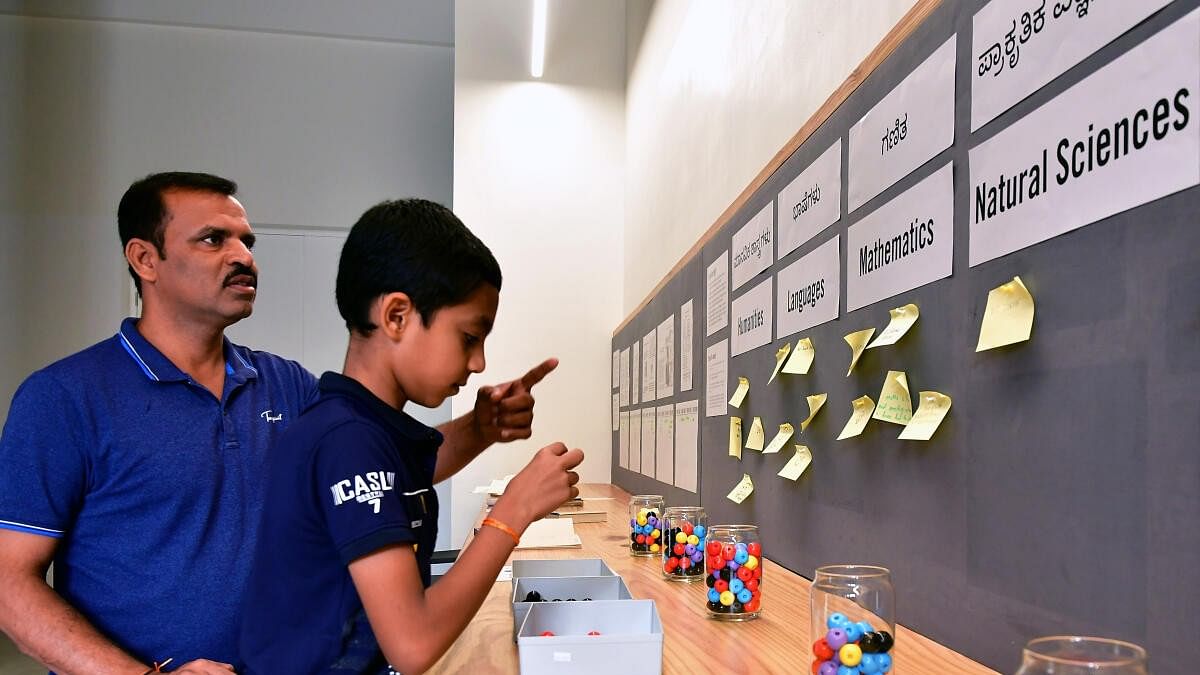
The Science Gallery Bengaluru (SGB) launched their exhibition season with ‘Sci560,’ a historical exploration of Bengaluru’s academic and military innovations.
Credit: DH photo
Bengaluru: The Science Gallery Bengaluru (SGB) launched their exhibition season with ‘Sci560,’ a historical exploration of Bengaluru’s academic and military innovations.
The name ‘Sci560’ combines ‘science’ with the first three digits of Bengaluru’s postal code. The exhibits showcase a range of innovations, including India’s first aircraft made at HAL, the HT-2; the Bangalore Torpedo, an explosive charge used in World War I for clearing obstacles; neutrino detection experiments at the Kolar Gold Fields; and ‘Bheja Fry,’ an experiment exploring how certain brain areas understand time and causality.
The exhibition was inaugurated by S N Boseraju, Minister for Science and Technology, who announced a ₹10 crore contribution from the government to SGB’s corpus fund.
Nobel Peace Laureate Kailash Satyarthi addressed the gathering, advocating for a change in the social construct of knowledge. “Not only must we demystify science but also religion. We need to remove superstition and build a scientific society.”
“Sci560, our new exhibition in collaboration with the city’s leading institutions, explores Bengaluru as India’s most recognised military-industrial-academic complex. We invite citizens and visitors to explore some of the ideas, individuals and institutions that made this possible,” said Jahnavi Phalkey, Founding Director, Science Gallery Bengaluru. Sci560 is supported by a grant from Rohini Nilekani Philanthropies.